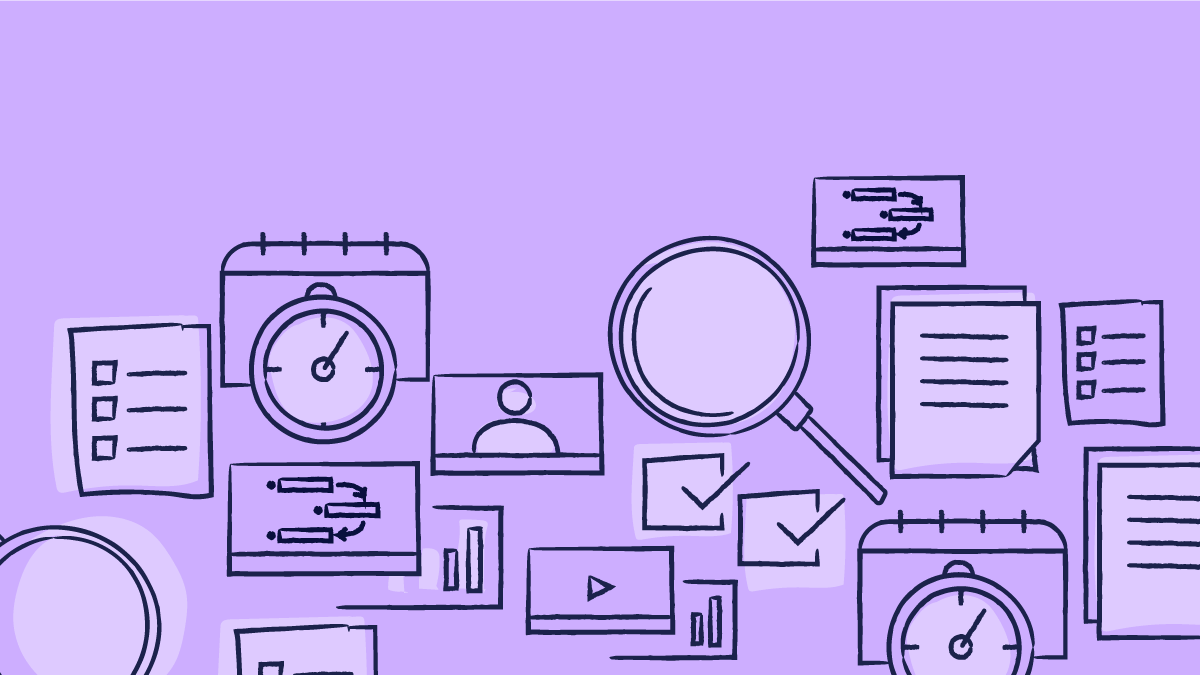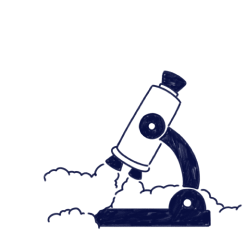
The pharmaceutical industry is under more pressure than ever. Regulatory demands are tighter, production timelines are shorter, and data is more complex. Add global teams and supply chain volatility, and you've got zero room for error.
Yet, many companies are still relying on paper records, Excel files, and scattered SharePoint folders. In 2025? That’s risky business.
Modern pharmaceutical software is no longer a “nice-to-have.” It’s essential. Whether it’s eQMS, ERP, CRM, or LIMS, these tools give life sciences companies the automation, integration, and audit-readiness they need to stay competitive, and compliant.
In this guide, we’ll walk through the most impactful software types, how they benefit your operations, and where the industry is headed next.
Why pharmaceutical software matters more than ever
Across R&D, clinical trials, manufacturing, regulatory, and commercial operations, software isn’t just supporting pharma teams, it’s transforming how they work.
Software accelerates drug discovery, ensures clinical trial compliance, ensures patient safety is not compromised, enhances pharmacovigilance, guarantees manufacturing deviations are flagged in real time, automates quality processes, simplifies regulatory information management, and provides business leaders with data-driven insights for driving better decisions.
Let's examine the software types driving this transformation.
The most critical types of pharmaceutical software
Pharmaceutical companies rely on a vast array of specialized software, from compliance to data analysis, but there is no one-size-fits-all solution.
In the quality landscape, the adoption of modern eQMS platforms has led many organizations to avoid juggling disconnected systems.
Here are the core categories:

Research and Development software
In pharmaceutical R&D, speed, accuracy, and data integrity are everything. The pressure to bring safer, more effective therapies to market faster means that traditional lab notebooks and manual trial-and-error approaches just don’t cut it anymore.

Ligand-Based Drug-Design
This software uses known information about molecules that bind to a specific biological target to guide the development of new drug candidates. Software in this area analyzes molecular interactions to predict which compounds are most likely to be effective, saving time and narrowing down potential leads.
Computer-Aided Drug Design (CADD)
CADD platforms simulate how potential drug compounds will interact with their targets of interest at the molecular level. This helps researchers visualize binding sites, assess structural fit, and optimize molecules before moving into costly lab work. It’s a key part of rational drug design and significantly reduces trial and error in the discovery phase.
Electronic Laboratory Notebooks (ELN)
ELNs replace traditional paper notebooks with a secure, searchable digital platform. They allow researchers to record experiments, attach raw data, collaborate across teams, and maintain a complete audit trail, all while ensuring compliance with data integrity standards like ALCOA+.
Design of Experiments (DOE)
DoE software helps scientists plan and analyze experiments in a statistically robust way. Instead of testing one factor at a time, DoE enables researchers to evaluate multiple variables simultaneously in a minimum number of experiments, optimizing formulations and processes.
Clinical trials software
Managing clinical trials efficiently requires more than spreadsheets and emails. Clinical trial software simplifies every stage of the process, from enrolling patients to analyzing results. It reduces errors, improves efficiency, and ensures trials stay on course.

Electronic Data Capture (EDC)
EDC software collects patient data at the point of care, as well as manages, stores, and analyzes clinical trial data. It also supports remote monitoring, which has become especially critical in decentralized or hybrid trials.
Clinical Trials Management Systems (CTMS)
A CTMS is used to plan, track, and manage the operational side of clinical trials, from site selection and budgeting to subject enrollment and milestone tracking. With all trial activity centralized, sponsors and CROs can monitor progress across multiple sites.
Clinical Data Management Systems (CDMS)
While EDC focuses on data collection, a CDMS takes it a step further by cleaning, validating, and preparing clinical data for analysis. These systems help ensure that the final data set is complete, accurate, and ready for submission.
Electronic Trial Master File (eTMF)
The eTMF is a digital archive of everything related to the clinical trial: contracts, ethics approvals, protocols, informed consent forms, and communications.
Statistical Analysis Software (SAS)
SAS uses advanced analytics to identify trends, measure outcomes, and support regulatory submissions with validated statistical methods. In many cases, the analysis performed in SAS determines whether a trial meets its endpoints and if a drug can move to the next phase or reach the market.
Pharmacovigilance software
Once a drug hits the market, the job is not over. Safety monitoring becomes even more critical.
Pharmacovigilance software helps track, analyze, and respond to adverse drug reactions (ADRs) and other safety signals in real time after drugs have been approved for use.
Safety Database Systems
Safety Database Systems collect, store, and analyze adverse effects of medications, including Adverse Drug Reactions (ADR), from healthcare providers, patients, and internal teams during clinical trials and post-market surveillance.
Pharmaceutical manufacturing software
Manufacturing pharmaceutical products means making them right the first time, every time. That means tight control over quality, documentation, equipment, and data.
Modern pharmaceutical manufacturing runs on digital tools. An article about pharmaceutical manufacturing software market analysis and forecast for 2025-2032 concludes there is a high demand for integrated software solutions over the next few years to improve visibility, optimize processes, and improve collaboration between stakeholders.
Here's a breakdown of the most important systems, and how they work together:

Quality by Design software (QbD)
QbD software promotes drug quality by using statistical, analytical, and risk management strategies throughout the research, development, and manufacturing phases.
The approach starts with predefined objectives and emphasizes product and process understanding and process control, based on sound science and quality risk management. The goal of QbD is to minimize risk and variability by understanding and controlling the process at every step.
Electronic Document Management Systems (EDMS)
EDMS are still used by some companies as a standalone solution for managing controlled documents with version control and audit trails. But for growing teams, an EDMS often becomes a limiting silo. Ideally, it is now part of a broader eQMS.
Electronic Quality Management System (eQMS)
An eQMS, like Scilife, is the quality command center. It is a QMS software connecting quality processes, including change control, CAPAs, deviations, training, audits, supplier management, and more under one roof.
Unlike a basic EDMS, which only stores documents, a modern eQMS platform actively drives processes forward with automation, collaboration, and real-time insights.
Recommended learning: Discover the best quality management software (QMS) for life sciences.
Manufacturing Execution Systems (MES)
MES digitally guides production activities and automatically generates compliant batch records. MES, also known as Electronic Batch Record Systems (EBRS) reduce manual data entry, enforce process steps, and instantly flag deviations, making cGMP compliance part of the workflow.
However, MES does not manage quality processes like deviations, CAPAs, change controls, training, etc. Without an eQMS, these processes are handled manually or in separate systems, which leads to delays, miscommunication, and compliance risks.
Enterprise Resource Planning (ERP)
Pharmaceutical ERP software helps organizations plan and track materials, production, equipment, and finances. Integrated with MES and eQMS, it gives a real-time view of inventory, supplier status, and manufacturing timelines, key to staying agile.
Pharmaceutical CRM software
Pharmaceutical Customer Relationship Management (CRM) software manages relationships with customers, healthcare providers, patients, and other stakeholders.
Quality control software
QC software manages test results, equipment, and reagents inventory, tracks OOS results, and ensures only quality-approved batches move forward according to quality standards and regulatory compliance.
The most well-known software is LIMS.
Laboratory Information Management Systems (LIMS)
LIMS software is essential for managing workflows within a laboratory: sample tracking, testing, data management, instruments integration, reporting, and data analysis. It helps QC labs stay efficient, audit-ready, and compliant with regulations like 21 CFR Part 11, GxP, and ISO standards.
Pharmaceutical regulatory compliance software
Pharmaceutical regulatory compliance software helps companies stay on top of evolving global regulatory requirements, and streamlines submissions and changes.
Regulatory Information Management System (RIM)
RIM software is designed to plan, track, and manage regulatory information and processes throughout the product lifecycle, including submissions, product registrations, compliance, communications with regulatory authorities, regulatory intelligence processes, reporting, and analytics.
Electronic Trial Master File (eTMF)
Software used to digitally organize, store, and manage all essential documents -consent forms, study protocols, investigator brochures, communications, and regulatory approvals-required for clinical trials to demonstrate regulatory compliance.
Sales and marketing software
Sales and marketing software assists in managing customer relationships, analyzing market trends, and tracking sales performance. These systems enable effective communication with healthcare professionals, facilitate product promotion, and aid in complying with regulatory requirements related to marketing activities.
Data Analytics and Business Intelligence (BI) software
Data analytics and business intelligence software use advanced techniques to analyze and interpret large sets of data to uncover patterns, identify trends, and extract meaningful information. This data is then presented to help business leaders make data-driven decisions. They transform raw data into actionable knowledge.
Software deployment methods
In choosing pharmaceutical software, it's not just about the features, but also about how the software is delivered, managed, and maintained.
The following is an easy-to-understand guide to the four main types of deployment models: web-based, client-server, cloud-based, and hybrid solutions-, and their unique features, benefits, and potential downsides.
If you are not sure which deployment method is right for your pharma business, think about your team’s work style, compliance, and security needs, your organization’s growth stage, budget, structure, and how many resources you have.
Choosing the right solution can not only accelerate implementation but also enhance user adoption and speed up your time to value.
Client-server (On-premise)
Client-server software is a bit old-school, but still popular for companies that want total control. Here, the software is directly installed and runs on individual machines or local servers belonging to the company’s own private servers.
- Benefits: You can customize it as much as you want and keep sensitive data in-house. Even if the internet goes down, you will still be able to work.
- Downsides: Typically, a license is required for each user or server. It also takes a lot of time and money to install, maintain, and update. Furthermore, remote access isn't possible as long as you set up a virtual private network (VPN).
Web-based
The access is via web browser -e.g. Chrome, Safari, Firefox-. You do not need to install any software on your computer.
- Benefits: This is perfect for remote workers since everyone can access the same system from anywhere with the internet. Updates happen automatically, so you never have to worry about running old versions.
- Downsides: If your internet goes out, you’re stuck waiting. And, while security is usually strong, you have to trust that the company behind the software is keeping things locked down.
Cloud-based
Cloud-based software is like renting an apartment instead of buying a house. It is about creating a virtual environment that defines how servers are used and managed. The three most popular cloud deployment models are software as a service (SaaS), platform as a service (PaaS), and infrastructure as a service (IaaS).
For example, in the case of SaaS, like with Scilife, your organization would pay for a cloud subscription license rather than owning the software outright.
- Benefits: You don’t have to worry about maintenance or repairs, because the provider handles all of that. You just pay a fee, log in from anywhere, and get to work. Cloud solutions are super flexible: if your business grows, you can easily add more users or solutions. Your data is backed up automatically, and updates roll out without you lifting a finger.
Hybrid solutions
Hybrid solutions are the best of both worlds. Imagine you keep your most valuable jewelry in a safe at home (on-premise), but store your everyday items in a secure locker at the gym (cloud).
With hybrid pharmaceutical software, you might keep sensitive patient data on your own servers (on-premise) but use cloud tools for quality management, analytics, or collaboration (cloud-based).
- Benefits: This setup gives you flexibility and security, letting you transition to the cloud at your own pace.
- Downsides: It can get complicated making sure both systems “talk” to each other smoothly takes planning, and you might need a bit more IT support to keep everything running seamlessly.
Regulations and compliance in pharmaceutical software development
Pharmaceutical software doesn’t just need to be functional. It must be compliant from the ground up. In an industry where data integrity, product safety, and traceability are non-negotiable, software solutions must align with strict regulatory frameworks.
Some of the most critical regulations and standards that pharmaceutical software must comply with include:
ISO Standards
ISO 9001 - Quality Management Systems
ISO 13485 - Medical Devices - Quality Management Systems
ISO 14971 - Medical Devices - Risk Management
ISO/IEC 27001 - Information security, cybersecurity and privacy protection
ISO 26580 - Software and systems engineering
FDA regulations and guidance
FDA 21 CFR Part 11: Requires systems to ensure electronic records and electronic signatures are trustworthy, reliable, and equivalent to paper records. This impacts everything from audit trails to user authentication.
General Principles of Software Validation - January 2002
US Laws
Health Insurance Portability and Accountability Act (HIPAA): Focus on protecting the privacy, integrity, and security of patient health data, also known as Protected Health Information (PHI).
EU guidelines
EU GMP Annex 11: Sets expectations for computerized systems used in GxP processes in the European Union, emphasizing validation, data integrity, and risk management.
EU regulations
General Data Protection Regulation (GDPR): Governs the collection, storage, and use of personal data within the EU.
ISPE guideline
GAMP 5 (Good Automated Manufacturing Practice): A risk-based approach from ISPE to compliant GxP computerized systems, often used as a framework for software validation. This guidance ensures systems are developed and maintained using a risk-based, lifecycle-driven approach.
ICH guidelines
ICH Q9 for Quality Risk Management: Provides a systematic approach for identifying, assessing, controlling, communicating, and reviewing risks that could impact product quality, patient safety, or regulatory compliance when using software systems.
E6(R2) for Good Clinical Practice: Provides guidance on quality and clinical practices, impacting software involved in clinical trials and pharmacovigilance.
Benefits of pharmaceutical software that go beyond compliance
In the pharmaceutical industry, staying ahead means optimizing every phase of the product lifecycle— from research and development to manufacturing, compliance, and beyond.
Pharmaceutical software is more than just a tool for compliance; it's the backbone that supports efficiency, and innovation across the entire lifecycle of your products.
Streamlines the product lifecycle
Pharmaceutical software integrates every step of the product journey—from lab to launch. Automation connects every phase, consolidating data, and enhancing collaboration across departments. Software helps you move faster and reduce errors.
Improves efficiency and cuts costs
Pharmaceutical software helps reduce costs and time. By automating manual work and organizing data in one central place, your teams can focus on what matters most.
Enhances security and integrity
Pharmaceutical software secures and protects sensitive data. It centralizes information, and minimizes the risks associated with data loss or tampering, ensuring the integrity of records and compliance with regulatory standards. This built-in security helps prevent breaches and guarantees that all data is safe, accurate, and available for audits whenever needed.
Ensures quality management maturity and compliance
The pharmaceutical industry is highly regulated, and staying compliant is critical. Pharmaceutical software makes it easier to maintain accurate records and meet strict industry standards like ALCOA+ and cGMP.
With the right software, you will always be prepared for audits and inspections, ensuring quality and compliance at every stage.
Recommended learning: The advantages of a cloud-based eQMS over paper-based QMS systems.
Provides real-time data for better decisions
Pharmaceutical software provides access to accurate, real-time data that is essential for making informed decisions and acting quickly.
Encourages continuous quality improvement and innovation
As regulations evolve and new challenges arise, pharmaceutical software offers the flexibility to adapt and innovate. It supports the development of new products, streamlines operations with automation, and ensures that your team can respond quickly to changes in the market or industry.
The future of pharmaceutical software
With rising regulatory complexity, global competition, and pressure to deliver faster, pharmaceutical software has become a strategic must-have, not just a nice-to-have.
The future of pharma is paperless. No doubt about it.
Cloud first
Local servers are being replaced by cloud-based platforms that scale globally, update automatically, and facilitate remote collaboration.
Real-time decisions with predictive power
Forget waiting for end-of-month reports. Advanced analytics and AI-driven models flag risks and highlight opportunities as they happen.
Built-in compliance
Modern platforms embed ALCOA+ principles (Attributable, Legible, Contemporaneous, Original, Accurate) by default. You are not just inspection-ready, you’re always inspection-ready.
And with growing concerns about data breaches, built-in security features such as user access controls, audit trails, and encryption are non-negotiables.
Innovation
Whether you’re launching new therapies or opening new markets, software platforms that grow with you are the foundation of sustainable success.
Key takeaways
- Legacy systems - paper records, Excel files, and disconnected tools- are slowing down pharma teams and increasing compliance risks. With tighter regulations and shorter production cycles, these legacy methods simply don't cut it anymore.
- Specialized pharmaceutical software brings speed, control, and compliance to every department.
- The future of pharma is fully digital and paperless. Investing in software today means building a more agile, resilient business for tomorrow.
Conclusion
The tools we choose today will determine not just how well we meet regulatory demands, but how confidently we lead our organizations into the future.
Pharmaceutical software is evolving rapidly, and so must we. Moving beyond paper records and fragmented spreadsheets to adopt smart, validated digital systems is no longer optional.
Investing in the right software ecosystem means gaining agility, visibility, and peace of mind.
The future of quality is digital, connected, and patient-focused, and it starts with you.
At Scilife, our eQMS platform integrates quality, compliance, and collaboration in one secure, cloud-based solution—built specifically for life sciences.






